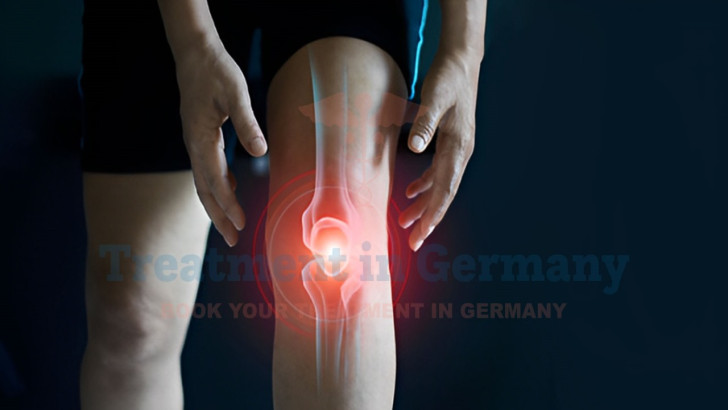
Osteochondritis dissecans (OCD) happens when a section of bone and cartilage in one of your joints loses its blood supply.
Osteochondritis Dissecans (OCD) is a joint condition where a fragment of bone and its overlying cartilage becomes detached due to a lack of blood supply. This results in pain, swelling, and limited joint movement, particularly in active children and young adults. Germany, renowned for its advanced medical technologies and expertise, offers innovative diagnostic and treatment options for OCD, providing patients with effective and comprehensive care.
Osteochondritis Dissecans occurs most frequently in weight-bearing joints such as the knee, ankle, and elbow. The condition develops when part of the bone beneath the cartilage dies due to reduced blood flow, causing the affected segment to loosen. In severe cases, the fragment may completely detach, leading to joint instability and further damage.
The exact cause of OCD is not entirely understood, but contributing factors include:
Symptoms of Osteochondritis Dissecans
Symptoms of OCD vary depending on the severity of the condition and the affected joint. Common signs include:
Diagnosis and Diagnostic Tools
Accurate diagnosis is crucial for effective treatment. Germany offers state-of-the-art diagnostic tools to identify OCD and assess its severity:
Treatment Options for Osteochondritis Dissecans in Germany
Germany’s advanced healthcare system provides a range of treatment options for OCD, tailored to the patient’s age, activity level, and severity of the condition.
Non-Surgical Treatments
In early stages or mild cases, conservative treatments are often effective:
Surgical Treatments
Surgery is considered when non-surgical treatments fail, or the lesion is severe. Germany offers minimally invasive and advanced surgical procedures, including:
Innovative Therapies in Germany
Germany is at the forefront of regenerative medicine and cutting-edge treatments for OCD, including:
Why Choose Treatment in Germany?
Germany is a global leader in orthopedic care due to:
Prevention and Management of Osteochondritis Dissecans
While OCD cannot always be prevented, these measures can reduce the risk:
FAQs
Can OCD heal on its own?
Mild cases may resolve with rest and conservative treatments, but severe lesions often require surgical intervention.
Is OCD more common in athletes?
Yes, athletes involved in high-impact sports like soccer, basketball, and gymnastics are at higher risk.
What is the recovery time for OCD surgery?
Recovery typically ranges from 3-6 months, depending on the procedure and the individual’s response to rehabilitation.
Are there any long-term complications of OCD?
Untreated OCD can lead to chronic pain, arthritis, and joint degeneration.
Why is Germany a top destination for OCD treatment?
Germany offers world-class care, expert specialists, and innovative treatment options for joint conditions like OCD.
Conclusion
Osteochondritis Dissecans is a joint condition that can cause significant discomfort and mobility issues, particularly in active children and young adults. While early diagnosis and conservative treatments can effectively manage mild cases, advanced surgical options may be necessary for severe lesions. Germany’s exceptional healthcare system provides comprehensive and innovative care for OCD, ensuring patients achieve the best possible outcomes. With proper treatment and rehabilitation, individuals can return to their daily activities and enjoy a pain-free life.
Kindly complete the form below, and our dedicated team will reach out to you promptly. We look forward to connecting with you soon!
Trierer Straße, 56072 Koblenz, Germany
.webp)
.webp)
 (1).webp)
 (1).webp)

.webp)
.webp)
 (1).webp)
 (1).webp)
